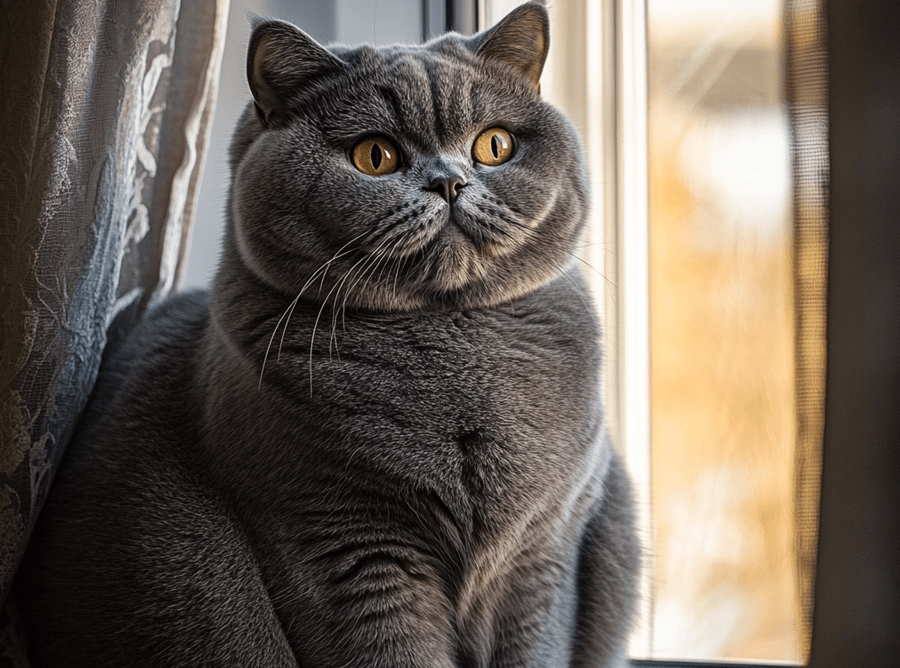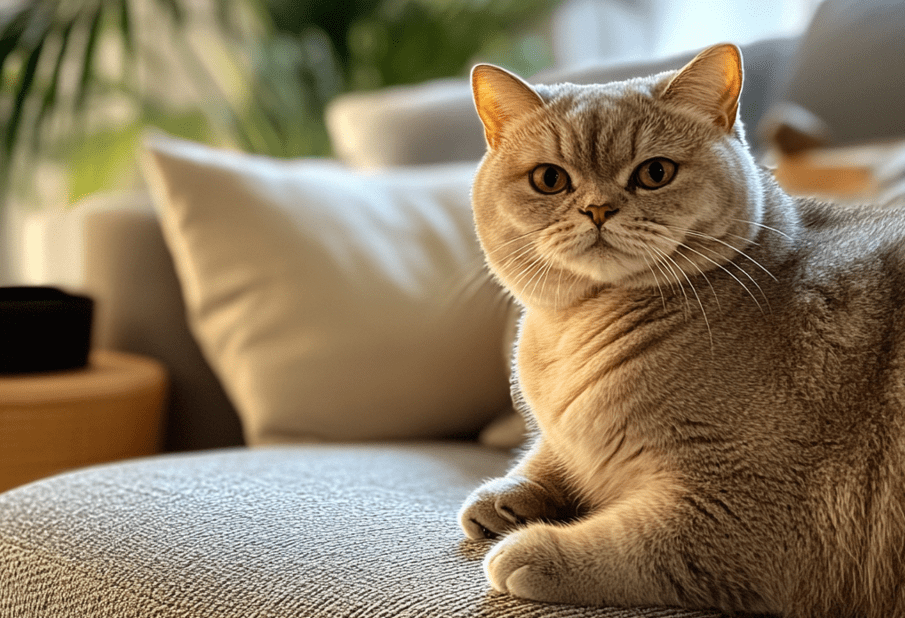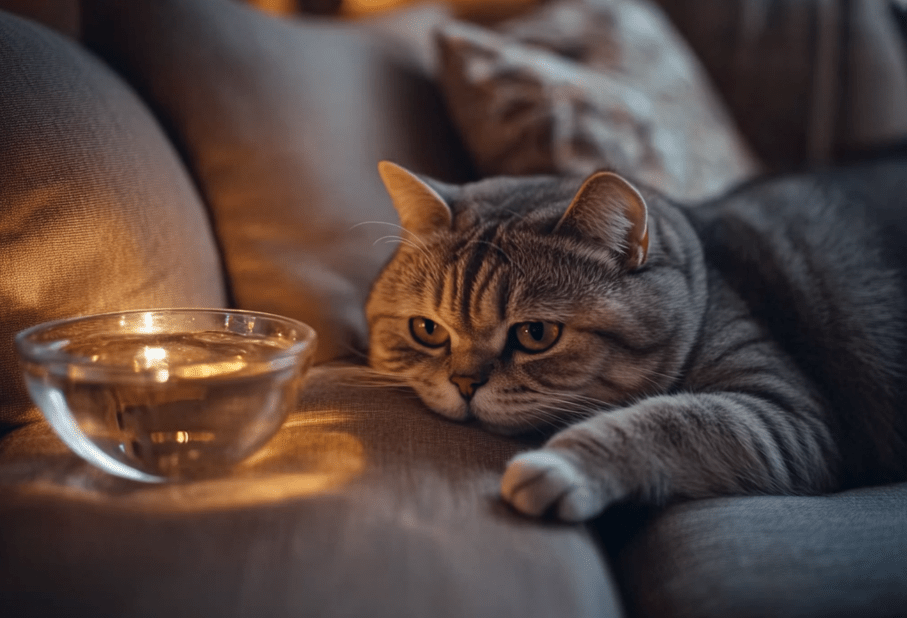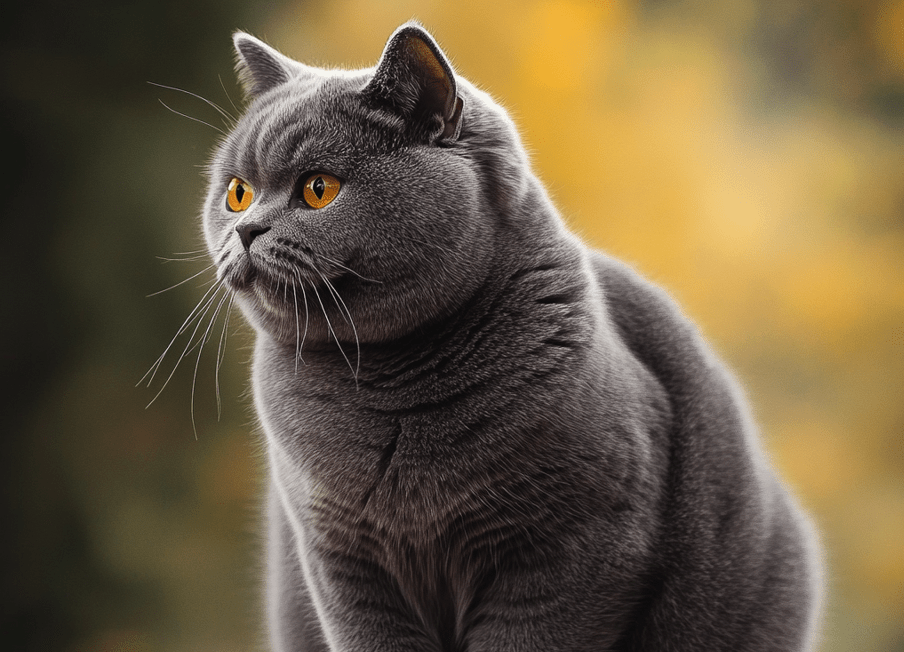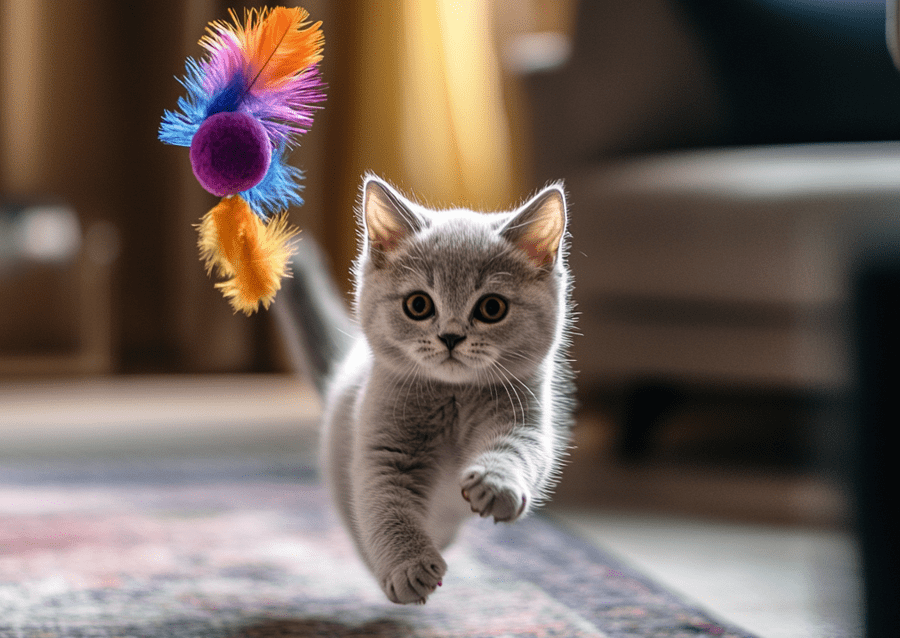
When do British shorthair kittens calm down? It is a very important question for managing their energy. The calm and even-tempered nature of British Shorthairs might seduce you into being a parent of one of these delightful kittens. But then, when you bring your new four-legged friend to your home, the reality may look something different. While it may take them a few moments to get comfortable, eventually, your kitten will turn into a ball of energy.
Your effervescent little shadow might race through the house, toppling ornaments, clawing the furniture and managing to make you question (again) the good sense of having curtains at all. “What will this bundle of energy settle down to do?” you might ask, as if this is something that will eventually happen. More importantly, how do you lead them to being the relaxed, gentle companion you thought you were getting? Here’s what you need to know.
To watch the summary of this article, just watch this video –
When Do British Shorthair Kittens Settle Down?
Don’t worry, your hyperactive British Shorthair kitten will calm down at some stage. Though they may appear to be unstoppable now, these kittens typically turn into the calm and loving cats they’re known as in roughly a year.
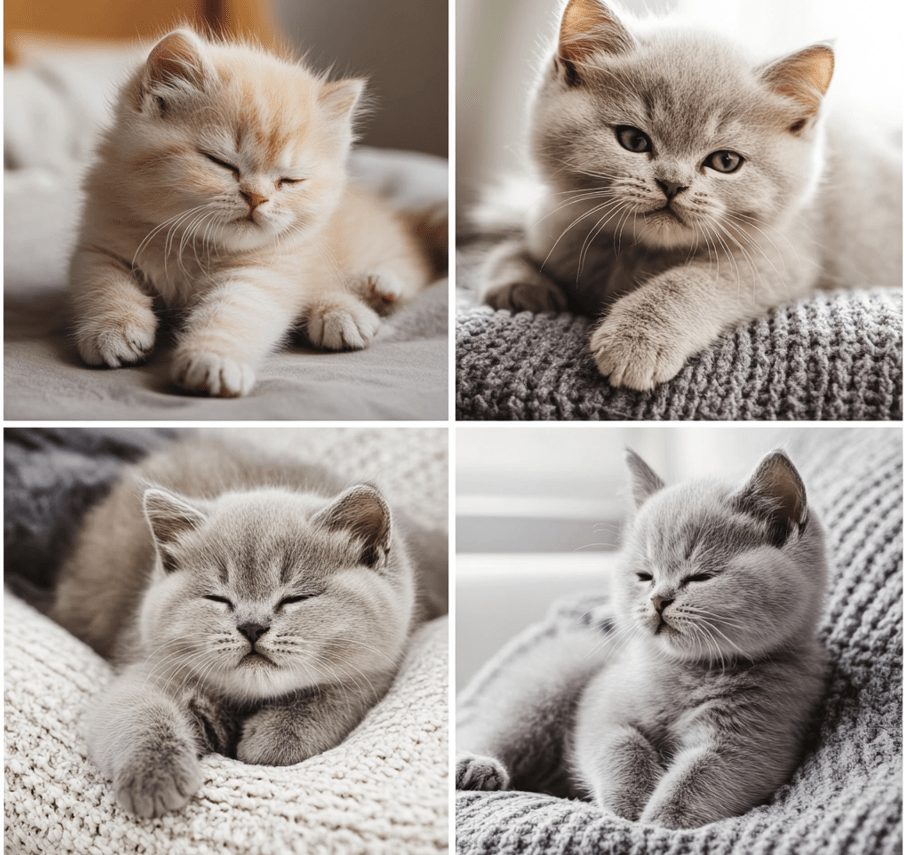
Here’s a rundown of the way they behave during their first year:
0–4 weeks: This stage is all about eating and sleeping. Kittens spend most of their time quietly growing and developing.
4–26 weeks: Their curiosity takes off and they start exploring and learning. This is the prime of their energy levels, so prepare for plenty of playfully crazy antics.
26–52 weeks: Physically and mentally the kitten continues to grow, but they start to slow down a bit.
1 year: By this age, the wild kitten phase often starts to wane and leaves a mellower, more relaxed personality.
Understanding this timeline will better prepare you to navigate your kitten’s boisterous periods, while you await the peaceful, affectionate cat he or she is destined to grow into.
Reasons Your Kitten May Be Hyperactive
Hyperactivity in kittens can be caused by a variety of elements. Two key factors are:
1.Coat Color
2.Upbringing
Connection between Coat Color and Temperament
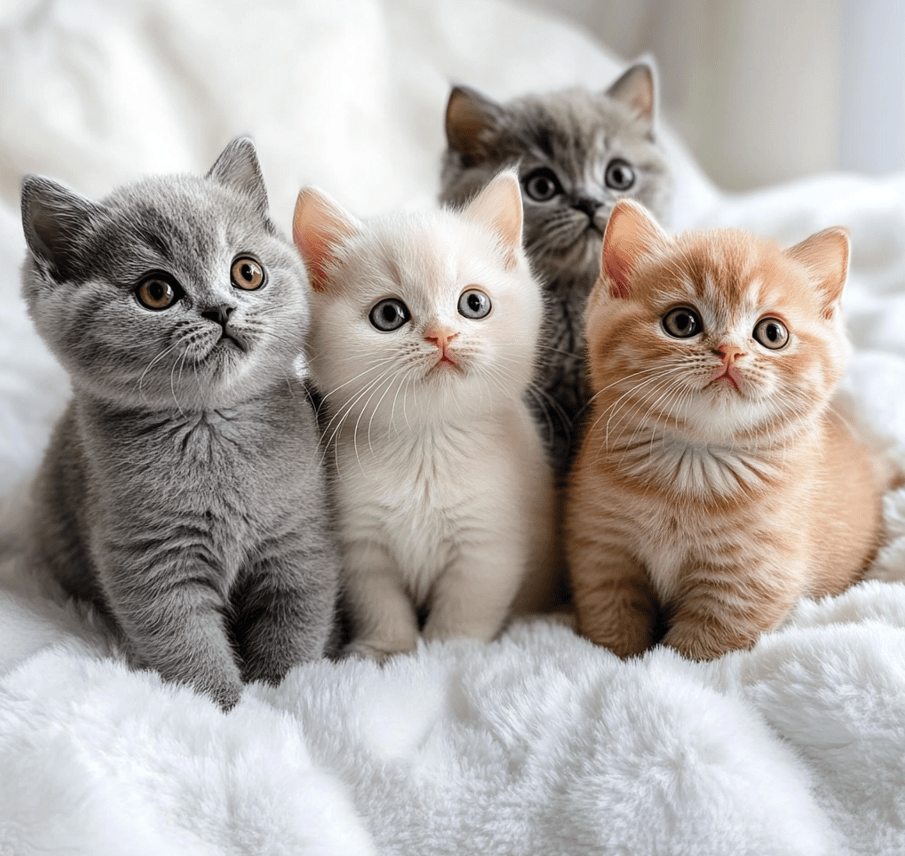
It’s not a hard-and-fast rule, but the color of a kitten’s coat might assist determine its personality. For example, the British Shorthair can come in almost every color imaginable, including:
1.Grey
2.Black
3.Cream
4.Silver
5.Cinnamon
They have various coat patterns, like tabby and tortoiseshell.
The study, conducted on 84 British Shorthair kittens, found that kittens with the “red” gene were more likely to throw tantrums and less tolerant of being held, especially by non-primary caregivers. Kittens with red, cream, or tortoiseshell coats were also more likely to be hyperactive than kittens of other colors. Perhaps the red fur gene is an early mutation, which could mean that it is associated with the temperament traits of the first domesticated cats.
However, if your British Shorthair kitten carries the red gene, it may take longer to adjust to life indoors and settle down, as their genes seem to predispose them to exploring the outdoors and generally being more active.
The Connection between Temperament and Upbringing
A kitten’s coat color may provide some clues as to its potential personality, but socialization and a stable environment are far more important contributors to behavior. Socialization, usually between 2 and 12 weeks of age but sometimes longer, is an important developmental stage for the kitten. Kittens stay with their mom and siblings during this time, gaining vital socialization to their species and getting used to humans and all kinds of animals.
During this stage of development, animals need access to a wide range of toys and objects in order for unsupervised play and littermate interactions to occur. Introducing kittens to various people for a few minutes at a time every day will also contribute to positive responses to humans as they mature.
So besides socialization, they also practice localization which is getting a kitten used to its surroundings to make sure it is in the environment it has grown to love. Bring a kitten into a new home and you must realize there is going to be a cocktail of emotions from the cat: Excitement, curiosity, joy, fear and sadness at being separated from the home it has known.
For instance, a British Shorthair kitten may require time to adapt to its new environment. That emotional chaos can result in behaviors like running frantically or scratching them against things. All it takes is a little love, patience, and training to help get these behaviors under control so that your kitten can settle in and thrive in their new home.
How to Calm Down Your British Shorthair Kitten
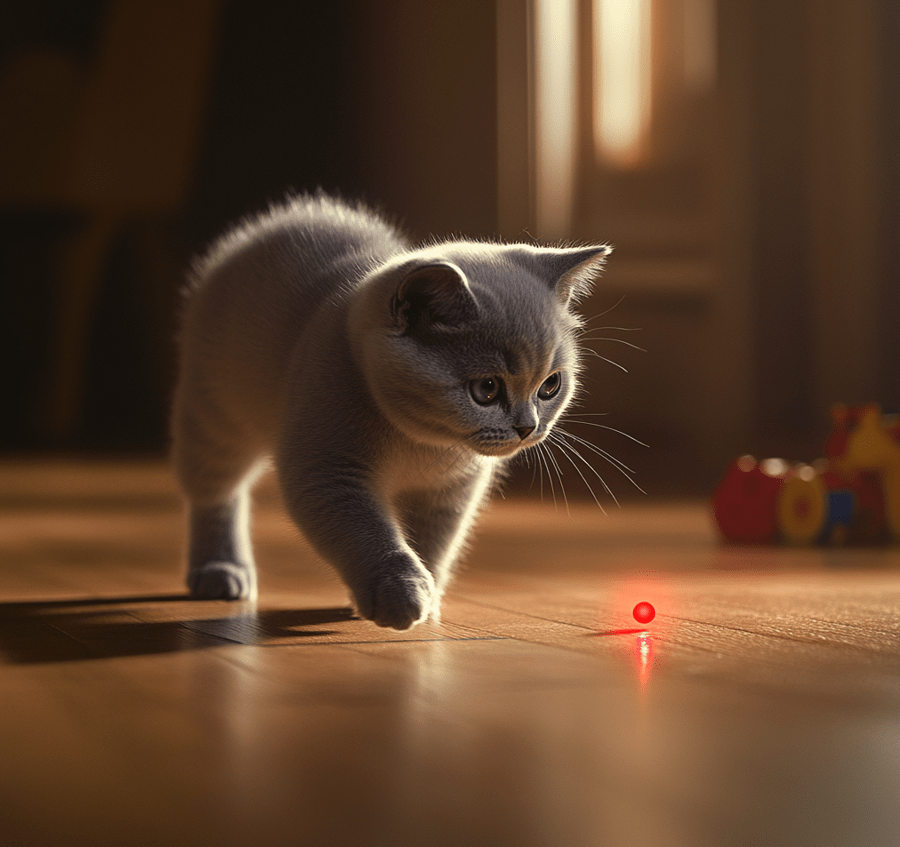
Some British Shorthair kittens might take more time to eventually become the serene, loving companions for which they are renowned. But some kittens may need a little extra help settling in, even if you, the breeder or the shelter have given the best care. How you can help them out:
1.Schedule Regular Playtime
So, while British Shorthair kittens need daily playtime, running off excess energy helps the kitten engage its innate hunting instincts. Great toys for your kitten would be:
1.Electric mice
2.Teaser toys
3.Lasers
4.Floppy fish
Set aside 30 minutes minimum of interactive play, every day. Playing with feather wands or laser pointers can also be a good exercise, and can help satisfy their curiosity. As British Shorthairs subside on finger foods, you can leverage their love for food puzzles to make them smart. You may choose to teach them tricks or use games like hide-and-seek, which also contribute to their intelligence and strengthen your bond.
2.Get Them Involved In Your Day-To-Day
British Shorthair kittens enjoy company and want to be a part of your everyday life. They tend to stick closely to their owners, watching their every move. It’s especially important during their experience in being a kitten; they need extra love and assurance.
Sit with your kitten and cuddle and pat her as often as you can. British Shorthairs become increasingly independent with age and may dislike snuggling quite as much, but ensuring they trust and are confident in their surroundings with you as a kitten is very important.
3.Think about Getting Them a Companion
While British Shorthairs tend to be more tolerant of solitude than other breeds, hyperactive kittens may actually do better with another pet in the house. Since they tend to bond well with other cats and animals, adding another furbaby to your family can help get that energy out, and keep them company.
Possible Causes of Hyperactivity in British Shorthairs
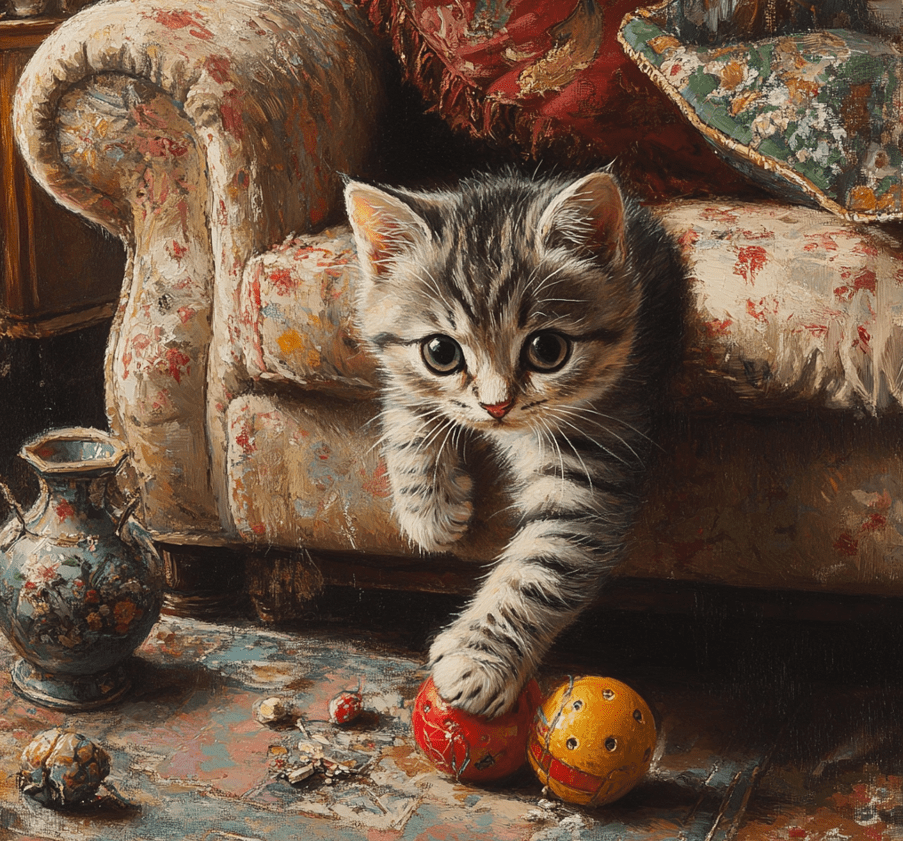
Besides being energetic because they are still young and playful, the following reasons may cause excess activity in British Shorthair cats when they are no longer a kitten:
Feline Hyperesthesia Syndrome (FHS): FHS is a condition that is more common in older cats and results in hyperactive behavior. Sometimes called “twitchy cat disease,” symptoms include erratic running around and aggressive biting when touched.
Boredom: A combination of insufficient physical or mental stimulation, or extended periods of solitude can cause a cat to run around and expend pent-up energy.
Fleas: Flea bites can be irritating for your kitten and lead to unusual hyperactivity and restlessness. (If you’ve eliminated other possibilities, check for fleas.)
Inappropriate Diet: High-carbohydrate diets will cause blood sugar spikes leading to bursts of energy, followed by lethargy. In the long run, if your energy intake (calories) is more than your expenditure (energy burn), the high amount of carbs and unburnt calories in the input will lead to obesity and some serious related health problems like diabetes, hyperthyroidism, heart disease, joint problems, and kidney disease. Make sure your kitten isn’t overfeeding and eating a well-balanced diet.
With regular care, mental and physical stimulation, and by being mindful of their health and well-being, your British Shorthair kitten will grow up to be a well-adjusted, composed adult!
The perfect diet for your British Shorthair Kitten

A British Shorthair kitten can consume solids, so the best diet will reflect what they normally eat. No matter what type of food you feed your pup—be it wet, dry, semi-moist, raw, or homemade—it’s important to make sure they get sufficient amounts of:
1.Animal Protein
2.Animal Fat
Animal Protein: Animal protein is essential as it provides every essential amino acid—like taurine, arginine, and lysine—that cats require for certain bodily functions, such as:
1.Energy production
2.Muscle development
3.Skin and coat health
4.Proper organ function
So when choosing food, look for one that contains at least 50 percent meat or fish. Opt for ingredients like:
1.Chicken (raw or cooked)
2.Liver
3.Turkey
4.Salmon
5.Prawns
6.Mackerel
7.Tuna
8.Pork, ham, beef, and bacon may also be fed, but the amount should be limited because they are fattening.
Animal Fat Animal fat contains crucial fatty acids that are necessary for healthy organ functioning and cell structure. Plus, it adds both flavor and texture to food to make it more attractive to cats. Even picky eaters who might otherwise turn their noses up at wet food may find a dish in jelly or gravy with moderate fat content appealing. Look for no more than 20% fat food.
Carbohydrates — Grains, vegetables, and even fruits are unnecessary in a cat’s diet. They do not necessarily provide any harm but act as a filler to dilute the protein percentage. Cats get little to no nutrition from these, and they can add empty calories that can translate into weight gain in the long run.
Plant proteins are not a very good source of nutrition – they are less efficient than meat in meeting the nutritional needs of your British Shorthair kitten. Avoid foods containing:
1.Soy
2.Rice
3.Corn or sweetcorn
4.Wheat
5.Peas
6.Carrots
7.Broccoli
8.Beans
9.Potatoes
10.Sweet potatoes

